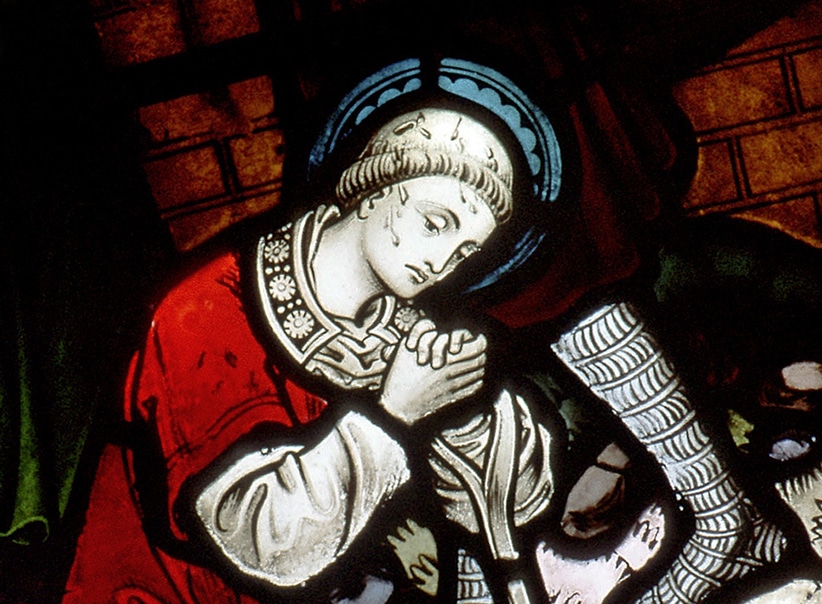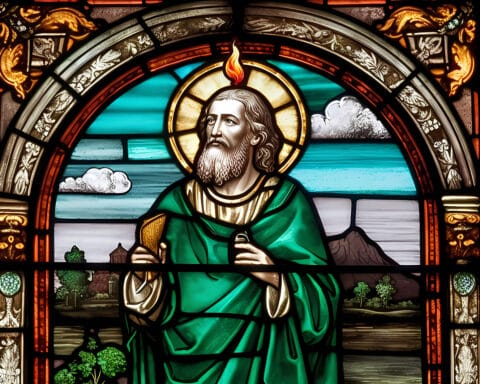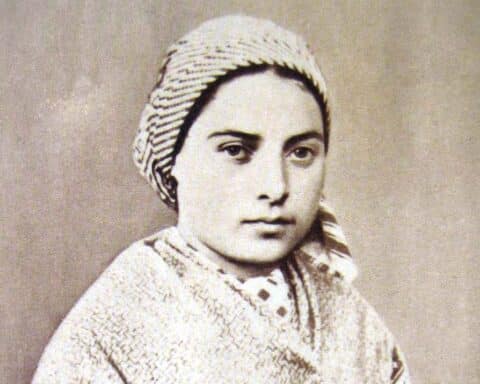
St. Stephen, the first deacon and the first martyr, has always held a special place among the Communion of Saints for me. My maternal grandmother celebrated her birthday on Dec. 26, St. Stephen’s feast day, and that played a large role in my decision to take St. Stephen as my patron at my confirmation. But so, too, did the account of his martyrdom in the Acts of the Apostles, and especially his courageous witness to the mercy of God toward Israel that culminated in the coming of Christ (and the repeated rejection of that mercy down through the centuries, ending in the death of Christ). As Stephen’s testimony draws to its close, even someone reading Acts for the first time must know how the story will end. The Truth has set Stephen free, and in his freedom, he no longer fears death.
Because Christmas Day falls on a Saturday this year, the feast of St. Stephen is dropped from the calendar, replaced by the feast of the Holy Family, which is celebrated on the first Sunday after Christmas. But even if Stephen is temporarily gone, returning next year on his normal date, he should not be forgotten. The celebration of his feast on the second day of Christmas is intentional and symbolic. We do not know on what date Stephen earned the crown of martyrdom for his witness to the resurrection and divinity of Christ. The only account of his life is found in the Acts of the Apostles, and there’s nothing there to suggest that he was martyred on Dec. 26. So why did the Church settle on that date for his feast?
A fifth-century bishop, St. Fulgentius, makes the Church’s wisdom clear in a homily for the feast (already well established by the fifth century): “Yesterday, our King, having put on the garb of our flesh, came from the sanctuary of his Mother’s virginal womb, and mercifully visited the earth: today, his Soldier, quitting his earthly tabernacle, entered triumphantly into heaven.” Christ descends so that we may ascend, but even if we do not suffer martyrdom, we must be willing to follow the path that Stephen trod. To worship at the manger means embracing also the cross; to be a Christian means preaching Christ crucified, resurrected and standing at the right hand of God — and being willing to accept the consequences that may follow our witness to the truth.
As the great liturgical scholar Dom Prosper Gueranger writes, “Stephen … deserves to stand near the crib of his King, as leader of those brave champions, the martyrs, who died for the divinity of that Babe, whom we adore.”
At the beginning of his public ministry, Jesus went into the desert, where, after 40 days of prayer and fasting, he was tempted by Satan. Recognizing that Jesus must be hungry, Satan told him to turn the stones into bread. Christ, of course, replied that man does not live by bread alone but is sustained by the word of God. In the martyrdom of Stephen, we see that to be true, but we also see something else: Through his witness, the stones that are the instruments of Stephen’s death become like bread that sustains the faith of his fellow Christians, down to this very day.
In traditional icons, St. Stephen is usually pictured holding a miniature church on top of a cloth of scarlet. The blood of the martyrs, and especially of the first martyr, constantly renews the Church. May we have the strength to stand in witness as St. Stephen did, and to forgive those who cast any stones.
Scott P. Richert is publisher for OSV.





